给创客的十条建议

Make a profit.
要有利润。
You would think this would go without saying, but one of the first mistakes Makers, well, make when they start to sell their product is not charging enough. It’s easy to see why, for all sorts of reasons.
如果不提及,或许你不会认为,大部分创客都会犯的一个错误就是他们没有给自己的产品确定一个合理的价格。原因很简单:因为所有的原因。
They want the product to be popular and the lower the price the more it will sell. They’re generous and they don’t feel right charging more than is absolutely necessary. Maybe they even feel that if the product was created with community volunteer help it would be immoral to charge more than it costs.
他们想让自己的产品收到欢迎,降低产品可以提高销售量。他们非常慷慨,并且对高价卖产品感觉不好。或许他们感觉到自己的产品是跟很多社区的无偿贡献者一起做的,如果收高价格是不道德的事情。
Understandable, but wrong. You’ve got to charge a reasonable profit, and the reason is simply because it’s the only way to build a sustainable business.
非常容易理解,但是这样想是错误的。你需要得到一份合理的利润,原因很简单,因为这是你唯一让你的生意可以维持的前提。
Consider what happens if you make 100 units of your delightful laser-cut handcrank toy drummer kit. You do the math, and between the wood, the laser cutting, the hardware, the box and the instructions, it costs you $20 to make each one. You pack the kits in your spare time, price them at $25 just to cover any costs you may have missed, and start selling.
假如你做了100套你设计的非常棒的激光切割的玩具套件。你计算了一下,包括木材、激光切割、硬件、盒子及使用教程会花费你20美元每套。你用业余时间打包套件,给这个套件定25美元来给自己的付出一点回报,开始销售。
Since it’s a fun kit and pretty cheap, it sells quickly. You suddenly realize that you’ve got to do it all again, this time in a batch of 1,000. Rather than putting up a couple thousand dollars to buy the materials, you’ve got to put up a couple tens of thousand dollars. Instead of packing the kits in your spare time, you’ve got to hire someone to do it. You need to rent space to store all the boxes, and you’ve got to make daily trips to FedEx.
因为这个套件很棒并且便宜,销售速度非常快。你突然认识到你需要重新做一批,并且这一批是1000套。你现在需要投入数万美元来购置材料而不是之前的数千美元。相对应之前的利用业余时间打包套件,你现在需要专门雇人来做。你需要租赁场地来存放这些盒子,你会经常跑到快递(FedEx)那里去。
Now your hobby is starting to feel like a real job. Even worse, the popularity of your kit has come to the attention of some big online retailers, and they’re asking about buying in batches of 100, with a volume wholesale discount.
现在你的爱好感觉起来更像是真正的工作了。更糟的是,因为套件的火热,引起了几个大的网上经销商的注意,他们要以100套的批量拿货,但是需要有经销商优惠。
You’re thrilled that your kit is so popular and flattered that these retailers, who can reach many more people than your own website, want to sell it. But since you’re still selling it yourself at $25, that’s the market price and the retailers typically can’t sell it for more (if manufacturers undercut their retail partners, that’s called “channel conflict” and typically leads to trouble).
你十分震惊套件如此火爆,并且被经销商愿意卖你的产品而受宠若惊,他们的网站比你的客户要多很多。但是你自己卖的价格是25美元,并且那就是市场价了,别的经销商已经没办法卖了(如果生产商比经销商卖更低的价格,被称为“渠道冲突”,往往会导致问题的出现)。
The retailers ask for a lower price because they need to make their own profit on each one, usually around 50%. So they need to buy them at no more than $17 each. Now you’ve got to sell each one at a loss! Your costs, which were once within the limits of hobby spending, are now at risk of driving you into debt.
经销商要求更低的价格,因为他们也需要有利润,通常为50%。所以他们需要以17美元的价格购买。现在你每卖一件都是亏钱了。你的付出原本只是兴趣支出,现在却有让你负债的危险。

Thus the rule of 2.3x. You should price your product at at least 2.3 times its cost to allow for at least one 50% margin for you and another 50% margin for your retailer (1.5 x 1.5 = 2.25).
因为2.3倍定律。你需要给你的产品定最小2.3倍与原成本,其中50%为你的利润,另一个50%是你的经销商的(1.5X1.5=2.25)。
That first 50% margin for you is really mostly covering the hidden costs of doing business at scale that you hadn’t thought of when you first started, from the employees that you didn’t think you’d have to hire to the insurance you didn’t think you’d need to take out and the customer support and returns you never expected. And the 50% margin for the third-party retailers is just the way retail works.
第一个50%的提价对你来说可以抵消一些你没有考虑过的批量生产隐藏的花费,比如员工、会计、客户支持等。另外的50%给第三方的经销商,经销商都是这样做的。
(Actually most companies base their model on a 60% margin, which would lead to a 2.6x multiplier, but I’m applying a bit of a discount to capture that initial Maker altruism.)
(事实上,大部分公司都是60%是提价,这会产生2.6倍的乘积,但是我考虑了一点优惠,可以获得第一批客户。)
So your $20 kit should have been priced at $46, not $25. It may feel steep to you now, but if you don’t get the price right at the start, you won’t be able to keep making them, and everyone loses. It’s the difference between a hobby and a real business.
所以你的20美元套件应该卖46美元,而不是25美元。这或许会让你感觉不舒服,但如果你一开始不把价格定正确,你将不能持续的做这个产品,所有人都没有好处。爱好和真实的生意是有区别的。

It takes lots of cash to stay in stock.
One of the surprising prices of success is how much it costs! Obviously you’ve got to buy your parts and pay for the manufacturing before you can sell your product and make the money back, and the time between those two can be measured in many months if not years.
Likewise, if your product has many components, you’ve got to have a healthy inventory of all of them, with a large buffer in case any one of them become hard to find or there is a delay in shipping them to you.
One of the first hard lessons Makers learn when they go into business is that their supply chain is only as strong as the weakest link.
If you’re out of one component, you can’t ship your product. For the want of one chip or bolt, your entire business can grind to halt.
“Out of stock” is the curse of the Maker industry. Because most of us are new to manufacturing, we don’t get our supply chains and component inventory right.
We don’t order components early enough and in enough volume. We don’t keep a database of our components to ensure that we’ve got the right number of all of them and get warnings when they’re running low. And we’re loath to spend tens of thousands of dollars on parts that just sit on the shelf until they’re used—it feels like dead capital, and it can add up.
But that’s the cost of small batch manufacturing. We’re not ordering in large enough volume to get just-in-time service from suppliers. We have to create our own component buffers, and that invariably means boxes and boxes of parts, just waiting around to be used if and when demand arises. It feels wasteful, but the alternative is worse: frustrated customers who can’t understand why products are constantly out of stock and eventually move on.
Depending on your business, you should expect components to take between a month and six months to arrive, and even that’s assuming you have a good enough tracking system that you could track sales velocity and order them at the right time.
Why so long? In the case of electronics components, manufacturers in Asia are cutting capacity and many of the third-party distributors who served as a supply buffer in the industry have gone out of business in the recession, meaning that many parts have a six month lead time if you can get them at all. Other parts need to be custom manufactured and so you need to order in large batches, making your component ordering “lumpy”, with one or two big orders a year, rather than smaller ones each month.
Say that you calculate that to ensure that you’re in stock at all times, accounting for the vagaries of supply, you’ll need an average of three month’s worth of components on hand. And say that your components represent 80% of your costs. That means that your component inventory should be at least 10% of your annual sales (a quarter of a year times 80% times your cost, divided by your 2.3x profit margin).
In reality, you won’t be nearly that efficient in your ordering, mostly because of the need to order in bigger batches than your demand can really justify, to get volume discounts (see next rule).
Most Maker businesses that I’ve talked to have to hold parts inventory closer to 25% of their annual sales. In the case of the successful businesses like MakerBot that can amount to tens or hundreds of thousands of dollars of circuit boards, motors and power supplies sitting in racks waiting to be used, and even then MakerBot was still forced to sell their 3D printers in batches, with customers often waiting a month or more for all the components to arrive so the kits were complete and could be shipped out.
(Fortunately, as MakerBot’s volume has increased, they’ve been able to smooth out their supply better, and delays are shrinking.)
In our own business of aerial robotics, we are never in stock of all our products (we have nearly 100) at any time. It’s been a source of constant frustration for both us and our customers, and perhaps the greatest challenge we’ve had as a business.
We’ve got nearly $50,000 in electronics components sitting on the shelf, but invariably there’s one that has suddenly proven hard to find or demand for one product that has jumped faster than we expected. Just like that, an entire product line goes out of stock. Even worse, manufacturers in the electronics industry are constantly upgrading their products, and we sometime find that a key part in one of our boards is no longer made, forcing us to redesign the board, which means both unexpected delay and having to trash our existing stock of PCBs for that product.
Electronics may be one of the hardest businesses for supply chain management, but all Maker businesses wrestle with it. That dead capital in parts, just sitting there waiting to be needed, is simply what it takes to offer customers what they want: the ability to order a product and have it arrive promptly.
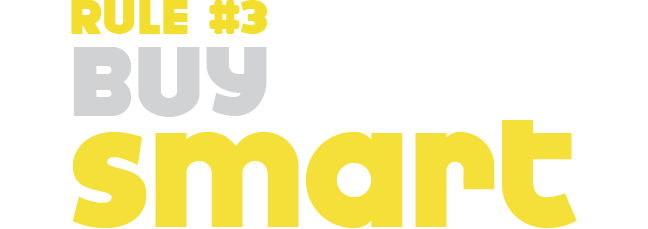
Buy smart.
The real difference between a hobby and a business is that businesses don’t buy retail. Just as you’ll be selling wholesale to other stores, you’ll need to buy your components wholesale to keep your products affordable. That means buying in volume, and the discounts typically get a lot better in units of thousands than in hundreds.
In the case of electronics components, that means buying reels or at least long tape strips rather than bags. Fortunately, there’s a pretty good secondary market for unused electronics parts, so if you really get your forecasting wrong, you can recoup a fair bit of the money by reselling them.
Likewise for laser cut products, where you can sometimes buy material in bulk or negotiate a volume discount with the service bureau. But for those, you can’t resell what you don’t use, so don’t bankrupt yourself shaving a few cents off a part and ending up with boxes of parts you don’t need.
As for your other components, almost everything you can find retail, you can trace back to the manufacturer or wholesaler. It’s worth the search—the price savings can be be astounding (we pay less than twenty cents for motors that sell retail for $3).
And these days, more and more wholesalers and manufacturers will work with small companies and even individuals. They either don’t care who you are as long you’re buying in volume, or will easily set up a wholesale account with some minimum order sizes.
Check sites such as Alibaba, which are a consumer-friendly window into the world of Chinese factories. You’ll be amazed how many things you recognize from the store shelf, available straight from the manufacturer at a tiny fraction of the price. And rather than insisting on bank transfers and purchase orders, they increasingly take credit cards and even PayPal.

Basic business rules still apply.
If you’re selling products under your own company name, you’re a real business and you have to act like one. That means doing it legally.
In the US, that means that you should incorporate. There are services that can help you with this, such as IncFile.com, or you can do it yourself by filling out online forms at state and federal agency websites.
For example, our company, 3D Robotics, is incorporated as a Limited Liability Corporation in the State of California. It will probably cost you a few hundred dollars to cover the paperwork and is required if you’re going to open a business bank account, have employees or otherwise operate anything larger than a lemonade stand.
Even if you’re just selling online, you need to charge sales tax in your home state. Note that it may differ from county to county within the state, so use ecommerce software that can handle this and look up the tax rates on your state’s government website. You’ll probably need to register for a “seller’s certificate” at your state’s government website, too, so you can pass on the sales tax to the state.
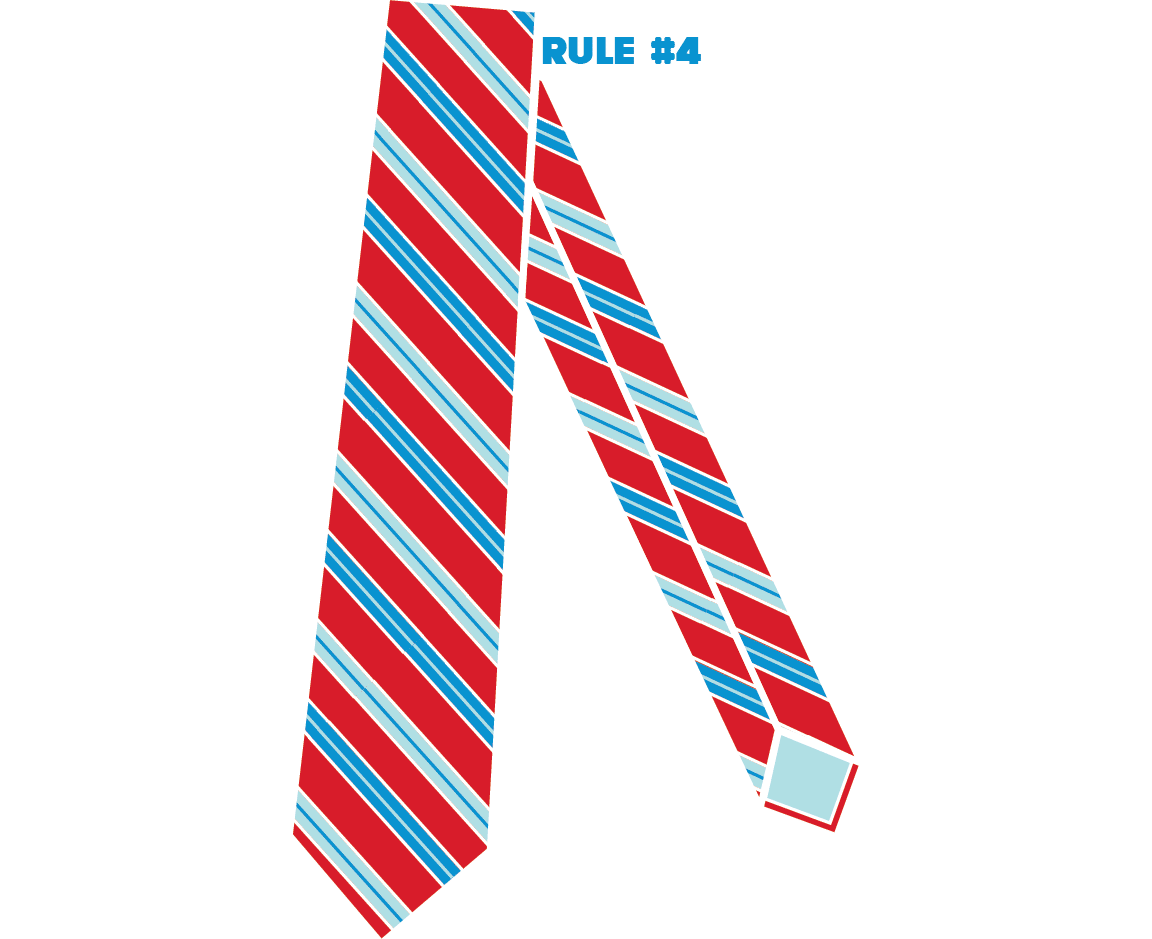
If you get to any scale, you should probably get liability insurance. This protects you from lawsuits from customers who may claim to be harmed by your product, from employee lawsuits (for injury, for example) and from workplace disasters. It’s also required by most commercial landlords if you’re renting workspace.
You may find that insurance companies are a bit confused about what it is that you actually do, especially if you make crazy stuff like open source flying robots (let’s just say I learned this the hard way).
So it’s best to describe your business as simply as possible: “retail”, “design”, “assembly”, etc. Try to avoid words like “manufacturing”, which scares insurance companies and will lead to high premiums and few companies willing to cover you.
As for your terms of service and guarantees, if you’re selling a kit you can’t promise to replace anything that doesn’t work, since you can’t tell if it shipped broken or they broke it in assembly (there is no “open the case and void the warranty” clause with kits).
In that case, you should use language that’s clear and helpful but limits your liability. Here’s a good example, from CoolComponents.co.uk:
“All goods are checked before they are sent out. In the unlikely event that goods are faulty, they must be returned to the address listed on your order invoice. We will not accept goods that have clearly been used more than the amount needed to evaluate their functionality. If the goods are found to be in working condition, and the lack of functionality is a result of lack of knowledge or assembly error on the customers part, no refund will be made, but the goods will be returned to the user at their expense.”
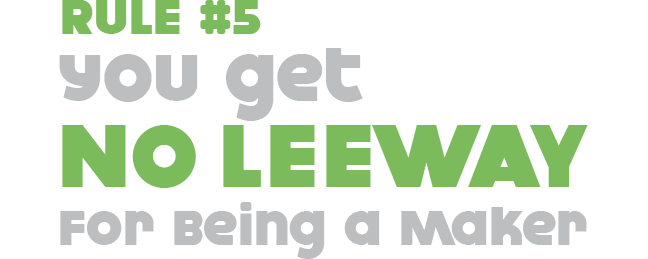
You get no leeway for being a Maker.
I know. You’re a good person, running a small business, maybe even giving away your intellectual property to the world.
It doesn’t matter. People are going to complain. They’re going to want more features and changes. They’re going to moan about your website and documentation. As open as your product is, people will want it be more open, and they want you to help them endlessly.
And the moment you charge a penny, it gets worse. People will expect Amazon-level service the moment you take your first order.
They’ll want cheaper shipping and special international customs treatment. If they work for the government they tell you that they shouldn’t pay sales tax and you have to become certified as a government vendor to enable that. If they work for a university, they want you to take purchase orders.
Every cliché applies: no good deed goes unpunished. People always look a gift horse in the mouth.
Maybe it’s only 1% of your customers who act like this. But because you’re a Maker and you’re all about openness and community, you’ve got forums and comments on your site, and as your sales grow that 1% can become a drumbeat of negativism that turns off new customers.
The solution? You’ve got to suck it up and get in touch with your inner zen shopkeeper. Patience, patience, patience. Count to ten, smile, and remember: the customer is always right. Even if they’re being a jerk.

Be as open as you can.
Why not release your designs, free for all to use? I realize that for many people this seems insane, but we’re seeing more and more examples of such Open Source Hardware business models working brilliantly.
It’s what we do at DIY Drones, and here’s why: when you release your designs on the web, licensed so that others can use them, you build trust, community, and potentially a source of free development advice and labor.
We release our electronics PCB designs in their native form (Cadsofts’ Eagle format), under a Creative Commons Attribution + Share and Share Alike license (“by-sa”), which allows commercial reuse.
Our software and firmware, meanwhile, is all released under a LGPL license, which also allows for commercial reuse as long as attribution is maintained and the code stays open. The result: hundreds of people have now contributed code, bug fixes, design ideas and made complimentary products to enhance our own.
The simple act of going open source has provided us with a free R&D operation that would have cost hundreds of thousands of dollars if we’d been closed source and had to hire our own engineers to do the work, to say nothing of the quality of that work.
By day our volunteers are leading professionals in their own fields—the sort that would have been impossible to hire away. But by night, they follow their passions and do great work for us as volunteers. They do it because we’re collectively making something they both want for themselves and want to be part of, and because it’s open source they know that it will reach more people and attract more talent, creating a virtuous cycle that accelerates the innovation process far faster than conventional development can.
In short, when you go open source, you’re giving away something in hopes of getting back more in return. Is it guaranteed? No. You also need to build a community, ensure that the initial product is needed, documented and distinct enough for people to want to join in its development.
And even then, managing an open source community can be a full-time job itself. But when it works, it can be magical: an R&D model that’s faster, better and cheaper than that of the biggest companies in the world.
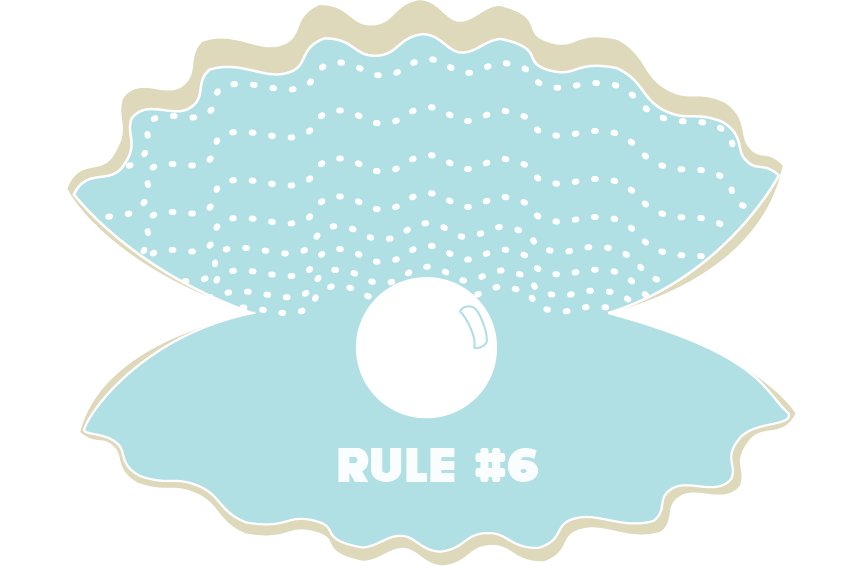
So needless to say, we don’t patent or otherwise restrict our intellectual property. But what if someone wants to rip us off? Well, it depends on what you mean by “rip us off”.
If someone else decides to use our files, make no significant modifications or improvements, and just manufacture them and compete with us, they’ll have do so much more cheaply than we can to get traction in the marketplace.
If they can do so, at the same or better quality, then that’s great: the consumer wins and we can stop making that product and focus on those that add more value (we don’t want to be in the commodity manufacturing business).
But the reality is that this is unlikely. Our products are already very cheap, and the robots we use for manufacturing are the same ones they use in China, at the same price. There is little labor arbitrage opportunity here.
And even if the products can be made cheaper, at the same quality, there is the small matter of customer support. Our community is our competitive advantage: they provide most of the customer support, in the form of discussion forums and blog tutorials and our wiki.
If you bought your board from a Chinese cloner on eBay and it’s not working, the community is unlikely to help—it’s seen as not supporting the team that created the product in the first place.
How will people know the difference between our products and clones allowed by our open source license?
Because the clones can’t use the same name. The only IP that we protect is our trademarks, so if people want to make the same boards, they’ll have to call them something else.
This is the same model used by the Arduino project. You can make a copycat board, but you can’t call it “Arduino” (although you can call it “Arduino-compatible). This goes all the way to removing the logo, name and artwork from the PCB design files that are publicly distributed. It’s a great way to maintain some commercial control while still being committed to the core principles of open source.
Another core aspect of open source is that users can make the products themselves, if they want—no need to pay you for it.
That’s great for about 0.1% of the user base, and they’re often the best source of new ideas and innovation around the product. But the reality is that the other 99.9% of users would rather pay someone to do it for them, guaranteeing that it will work. That’s your business.

Create a community to support and enhance your products.
A community of users and co-creators can be your greatest asset. Of course not all products need or deserve to have a community, but you’d be surprised how many can.
For example, one of my projects is an Arduino-based sprinker system (this is more about my family history than my garden: my grandfather invented the automatic sprinkler system in the 1940s). Can you build a community around a sprinkler system? It turns out that people already have.
Gardeners are passionate about growing technology, and the Maker movement dovetails neatly into the grow-your-own movement. And then there’s the small matter of the hydroponic pot growers, who I had not expected, but turn out to be major early adopters of irrigation technology.
There are literally hundreds of garden-tech communities out there, and the question is not whether a sub-community on open source sprinkler tech can exist, but only in which existing garden tech community should it start.
When you’re creating a community from scratch, consider starting it as a social network rather than a blog or discussion group. The best new social networking tools allow you to have it all: great blogging tools, great discussion groups, profiles, personal messaging, videos, photos and more.
Some people do this with WordPress and its plug-ins, others use Drupal, but I prefer Ning, which offers hosted tools that will let you create a full-featured social network on your niche topic in minutes (it has more than 300,000 of them already, although be forwarned that it now charges a modest monthly fee).

Once you see your community with content and start attracting users, your job is to give them jobs. Elevate people who seem to be constructive participants to moderator status, and give especially friendly and helpful members a “noob ninja” badge. Once you promote/reward enough of them for doing a good job of constructive community-building, you’ll find that members typically help each other, saving you the work.
But remember that at the end of the day customer support is your job. If someone bought a product that doesn’t work, they should be able to call or email and get help or a return authorization within 24 hours. By the time your sales are in the tens of thousands of dollars, this can become a full-time job.
And it’s an important one: just recall that when Craig Newmark, the founder of Craigslist, gave himself a job in his company, of all the ones he could take, from CEO to CTO, he chose customer support.
Get it right and you can have a community rooting for you. Get it wrong, and you’ll have a virtual riot on your hands.
Finally, the tricky matter of whether to pay volunteers. I’m in favor of offering key contributors to a product a royalty, but don’t be surprised if they decline. The reasons can be many: they’re not in it for the money; the absolute payment amounts are tiny compared to what they make in their day job; they feel icky taking payment when others who contributed don’t; and finally when they realize that any royalty you pay will lead to higher prices for consumers, they decline simply because this conflicts with the real reason they contributed, which is to create something that can reach the largest audience possible, and higher prices mean fewer users.

Design for manufacturability.
Making one of something is easy. Making 500 is not. The differences between prototypes and production models is the difference between hobbyists and manufacturers. Here are some quick tips, especially for electronics:
• Remember that every electronic product must be designed twice: first the product itself and second the test jig that you put it on after manufacturing to ensure that it’s working.
The test jig must not only be able to check all the electronic elements, which means special software to run through a series of diagnostics, but it must also make electrical contact with all of your product’s connections with a simple press.
That means using special spring-loaded connectors called “pogo pins” and creating PCBs that guide your product into the right position so that the pins make contact and the test software can be run by non-engineers in seconds.
• Use surface-mount components if at all possible, so they can be auto-mounted by pick and place machines at an assembly house. If you use any traditional “through hole” components (those with wires or pins that go through the board), they will typically have to be hand-assembled, which can triple the price (unless you’re making a kit, in which case asking the user to solder a few through-hole components is just part of the fun).
• If you want to ship to Europe, you need to use lead-free (ROHS) boards and solder. This means higher temperatures for your reflow oven, so that toaster oven you’ve been using probably won’t be up to the job anymore.
• Finally, the difference between the pros and amateurs is a good Quality Assurance (QA) process. Every product must be tested coming off the line, ideally with a test that checks every component under load.
We typically see failure rates around 1% even on our best-designed products, simply due to the number of components and the combinatorial statistics of a failure in one of them.
When we’ve designed a product poorly, such when we mistakenly used normal rather than gold-mix PCB traces on boards with fine-pitch components (be thankful if you don’t know what that means; it was a nightmare), the failure rate can skyrocket to 25%, which is a klaxon alarm telling you to redesign the board.

You’re doing this as much to protect your customers as yourself. With a normal failure rate of 1%, if you’re not catching bad products that means you’ve got one unhappy customer for every 100 goods you ship out.
They’ll need to return the product and you’ll need to send them a new one, shipping included, at your expense. Even worse, they may not know that it’s a faulty product and you’ll have to spend a lot of time with them doing tech support before that becomes clear.
And then there’s the probability that they’ll go to your forums and complain, which can lead to a perception that your failure rate is much higher than it is (happy customers don’t post as much as unhappy ones do).
Either way, that 1% failure rate can turn into 5% of your costs if you don’t catch mistakes before they go out the door.

Marketing is your job.
As the inventor of your product, you’re the best marketer for it, too. That doesn’t mean that you have to start doing infomercials or even taking out ads. Because you’re a Maker, you’re part of the larger community of Makers, and people want to hear about you and your product.
You should be blogging about your progress, and tweeting, too. Take pictures and videos of every milestone, and post those. Use every opportunity to talk about your work in progress and get people excited about it, which will not only start to form a community around it but will also build demand for it.
That’s all marketing. Community management is marketing. Tutorial posts are marketing. Facebook updates are marketing. Emailing other Makers in related fields is marketing. I suppose what I’m doing right now, writing this list, is marketing.
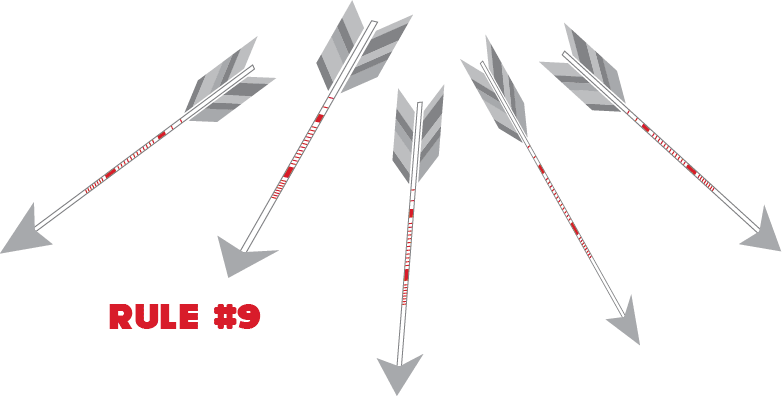
Of course it’s not just marketing: the reason why it’s so effective is that it’s also providing something of value that people appreciate and pay attention to. But at the end of the day, everything you do, from the naming of your product to whose coattail you decide to ride (we chose Arduino) is at least partly a marketing decision.
Above all, your community is your best marketing channel. Not only is that the source for the word-of-mouth and viral marketing that you’ll need, but it’s also a safe place to talk about your own products as enthusiastically as you want.
If you’ve given people a reason to gather that serves their needs and interests, crowing about your cool new gizmo isn’t advertising, it’s content!
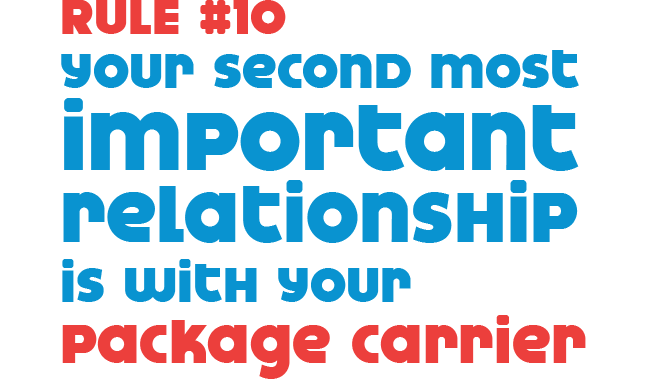
Your second most important relationship is with your package carrier.
Real businesses don’t pay retail. If you don’t get business discounts on your shipping, the prices will be as much as twice that of your competitors. And since it’s the one thing customers can compare across retailers, they’re super sensitive to shipping rates.
They’re so used to getting ripped off on shipping from eBay merchants that they suspect that high shipping rates are really part of your profit strategy. And when it come to international shipping, if you don’t get this right shipping costs can add up to more than the price of your goods, effectively closing off much of your international market.
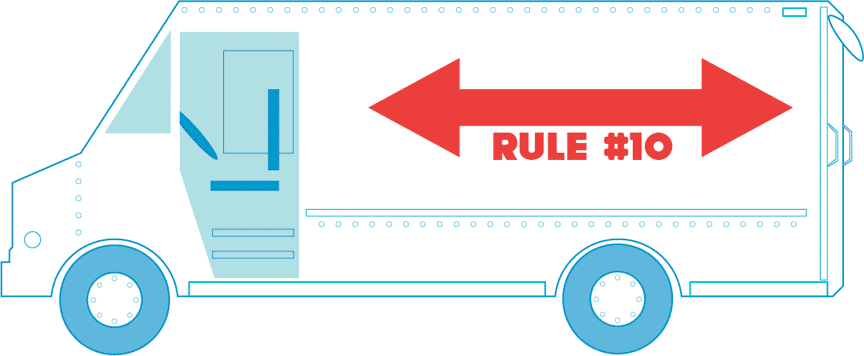
So get to know your Fedex sales rep, and become an expert in carriers. You’ll also need to select an ecommerce platform that works well with the FedEx, UPS and USPS website APIs. Give customers a range of shipping options, and make clear that if they use the ones that don’t come with tracking numbers, you’re not responsible if the package doesn’t show up.
For international shipping, give people an option to declare a value of less than the price of the goods; in many countries import duties, which are based on stated value, can be as much as the price of the goods themselves.



 浙公网安备 33010602011771号
浙公网安备 33010602011771号